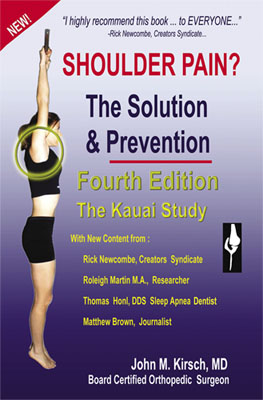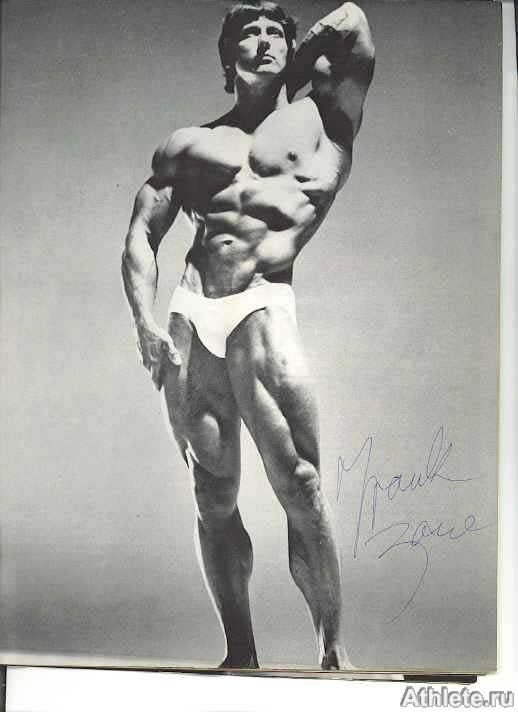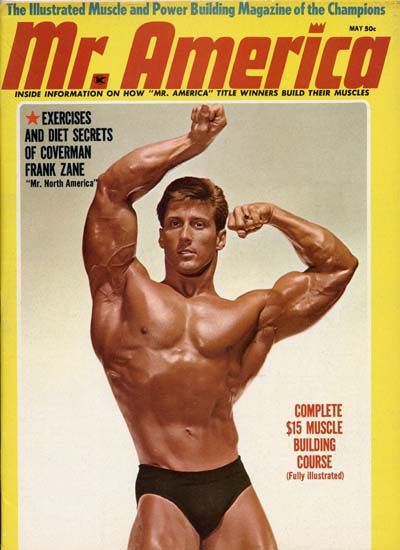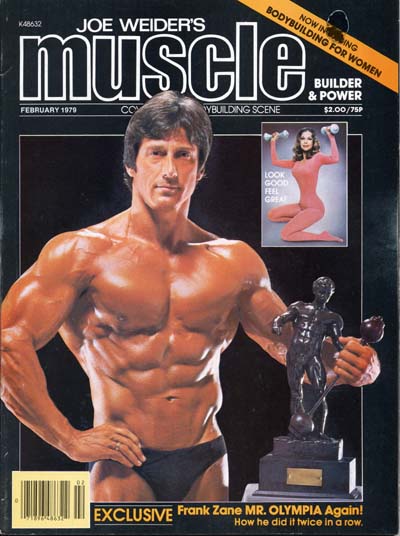Everybody knows how to train the shoulders, or so most powerlifters, bodybuilders and weight trainers think. After all, the classic 'hand me down' exercises for shoulder training are there to see in nearly every weight room in the country. Classic pressing movements (military, behind the neck, incline, dumbbell, etc.), as well as dumbbell raises (front, lateral, back, etc.), usually constitute the majority of the typical shoulder training menu of exercises. The question here is whether shoulder training is as simple as it should be.
If we all do know the total story on shoulder training, then logically one would expect there to be no serious problems where shoulder development, shoulder pain and shoulder injury are concerned. Is this the case in powerlifting today? I would argue strongly that it is quite to the contrary. I have begun to realize in recent years that heavy powerlifting not only can aggravate the low back and other regions but the shoulder is a 'key' problem area as well. Probably no two areas require more thoughtful training and 'injury proofing' than the low back and shoulder.
It is amazing to me how many powerlifters and weight trainers whom I've talked to have sore or injured shoulders. Typically, the shoulder problems they have are related to a variety of activities, including bench presses, throwing and racquet sports, classic shoulder weight training exercises etc. It is evident that not many people in or outside of powerlifting are really doing the job when it comes to shoulder training. Maybe we all need to do a bit of re-evaluation of our classic shoulder training 'menu' of exercises after all. [written in 1982]
A) What's Involved in the Shoulder Complex
Specifically, there are three bones involved: the scapula, clavicle, and humerus; eight ligaments: coraco-humeral, sterno-clavicular, etc.; seven joints: achromioclavicular, etc.; and believe it or not, 17 muscles, including deltoids, pectoralis major/both sterno and clavicular portions, the four rotator cuff muscles, teres major, latissimus dorsi. biceps, triceps/long head, serratus interior, pectoralis minor, levator scapula, rhomboids, subclavius, and trapezius.
Anatomy and Physiology, OpenStax College Free Textbook:
http://openstaxcollege.org/files/textbook_version/low_res_pdf/13/col11496-lr.pdf
It is easy to see that the shoulder complex structurally is by far the most complicated part of the body. As a direct result we also have a much greater range of motion possible in the shoulder than in any other joint of the body. Unfortunately, however, this very complex range of motion possible at the shoulder joint makes detailed quantitative biomechanical analysis incredibly difficult. Indeed, making the exact measurements of shoulder biomechanics of muscle activity such a hard task that the research that does exist necessarily involves only estimates for the motions and forces involved with the shoulders.
One important point to be made here about the shoulders is that the important muscles and ligaments crossing the shoulder joints ARE the shoulder stability. Unlike many other joints of the body (like the hip, for example) the shoulder must heavily rely on muscle and ligament activity rather than skeletal strength for its stability. Therefore development of the important muscles of the shoulder complex is extremely crucial for preventing problems in activities involving shoulders. Let's examine the shoulder musculature more closely.
B) The Simple (?) Muscle Activity of the Shoulder
By now you have no doubt guessed; there is nothing simple about the shoulder muscular system. In fact, there are a number of very unusual features that characterize the muscle action of the shoulders. First of all, there is an unusually high amount of contraction where two or more muscles are contracting simultaneously. Since the shoulder joint lacks stability without muscle action, any muscle that acts to move the arm must work harmoniously with other muscles in order to avoid causing a dislocation. In other words, a large number of shoulder muscles are involved in probably every shoulder motion.
Observations on the Function of the Shoulder, Journal of Bone and Joint Surgery:
http://www.fbw.vu.nl/nl/Images/Inman1944_tcm84-82201.pdf
The second factor distinguishing shoulder muscle activity is the number of two-joint muscles. Depending on the position of the arm, scapula, and clavicle, these two-joint muscles will have different effects on shoulder motion. As the position of the bones changes in exercise, for example, muscle activity changes dramatically. This has been demonstrated in several 'classic' studies of shoulder biomechanics.
[for example] -
Force Analysis of Individual Muscles Acting Simultaneously on the Shoulder Joints during Isometric Abduction:
http://www.bu.edu/nmrc/files/2010/04/003.pdf
In other words, small changes in arm or shoulder positions will have significant effect on which shoulder muscles are involved and when and how much these muscles work in a given weight training exercise or sport motion.
While it is beyond the scope of this short article to try to explore all aspects of the shoulder muscle activity, a few points can be made concerning the deltoids and 'rotator cuff' muscles. The three major muscle fiber populations of the deltoid muscle (most often referred to as anterior, lateral and posterior 'heads; or front, side, and rear delts) are apparently each capable of contracting fairly independently of the other heads. In other words, bench presses can conceivably involve anterior fibers of the deltoids while the other two heads are largely inactive. It is, however, overly simplistic to view the activity of the deltoids only in this sense (by saying for example, that anterior deltoid lateral raises work only the anterior head of the deltoid, lateral raises work only the lateral head, etc.). What really happens is much more involved and probably not remotely as clear cut. Many muscles of the shoulder are involved in any shoulder exercise.
As for the four 'rotator cuff' muscles, the major action of these small muscles is to pull the head of the humerus (the upper arm bone) into the glenoid (the shoulder). In doing this, the deltoid muscle has better leverage and is able to elevate and move the arm more efficiently.
C) Food for Thought
First of all, my personal feeling about shoulder training is that until a more detailed biomechanical study is done and completed on the shoulder, 'variety' and 'instinct' should be the two key words.
By 'variety' I mean that one should experiment with a greater number of exercises for shoulder motion than simply the 'classical' menu. One suggestion is to visit a good physical therapist or anyone knowledgeable in shoulder exercises to see the type of exercise they use for shoulder training. Some excellent non-classic exercises are available to try out.
By 'instinct' I mean you should attempt to 'tune in' as much as possible to the body's response to shoulder movements and exercises. Most top powerlifters (Bill Kazmaier, particularly) have a great knack of evaluating exercises in this manner. This is something we all need to at least try to be aware of in our training.
Let me finish by giving a short list of observations that I hope will primarily serve as food for thought regarding shoulder training.
1) I am particularly fond of dumbbell presses. This motion seems to activate, at least to some extent, most parts of the deltoid muscle and unquestionably brings into play other parts of the shoulder musculature. Dumbbell presses also reduce the excessive low back loading associated with normal barbell presses.
2) We have found in our biomechanics lab work here that the anterior deltoid is massively involved in all types of bench presses. Until we can do further work it is hard to identify which type of bench press works the anterior deltoid the most, but the anterior deltoid is unquestionably used a lot in bench presses of all types. It is an interesting question whether the anterior part of the deltoid muscle requires any extra auxiliary work above and beyond bench presses. I tend to think that many powerlifters seriously overtrain it.
3) I don't recommend pressing while seated (refer to my four articles in Powerlifting USA on abdominals and low back pain), since the stress on the low back region tends to be higher than when standing.
4) When and if you experiment with new exercises for the shoulder use light weights. Don't be overly ambitious and pack on the weight. The proportional increase is much higher when you try to increase your weight in dumbbell work. Be sure also that you are able to maintain the proper motion pattern whenever you add weight.
5) Machine training for the shoulder region should be treated very cautiously. Generally, some of the muscles that stabilize the shoulder are probably eliminated in activity (or reduced significantly) since the degrees of freedom are limited by machines. Thus, shoulder exercises when done on machines can often lead to incomplete development of shoulder joint musculature. I strongly recommend hat one use primarily free weight motion for a complex region like the shoulder.
Well, it's time to put my pen down (and get back to a workout). I hope this month that I have provided some food for thought regarding shoulder training. Above all, don't be afraid to experiment and learn from your own body's responses to training. Shoulder training, like weight training, in general, is anything but 'simplistic.' Instead of blindly copying everyone you see, instead of believing without research that 'simpler' is 'better,' try to tune in to your actual responses to varieties of exercise. The long term rewards are well worth it.





















